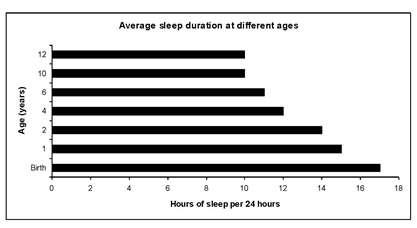Key points about normal sleep patterns
- sleep is important for children's learning and behaviour
- sleep helps to restore physical and mental health and keep our memory and immune system on track
- tamariki (children) who do not get enough sleep may not be able to learn as well as their school friends who get enough sleep
- sleep also helps children's brains grow
- school-aged tamariki need between 10 and 11 hours of sleep per night
- lack of sleep may cause your child to be moody, irritable, and cranky
The importance of sleep
Sleep is important for children's learning and behaviour. Sleep helps to restore physical and mental health and keep our memory and immune system on track. Sleep also helps children's brains grow. Tamariki who do not get enough sleep may not be able to learn as well as their school friends who get enough sleep.
Sleep cycles and how they work
Circadian rhythms, or sleep-wake cycles, are controlled by light and dark and take time to develop. They are stages of sleep that develop from about 6 weeks of age. By the age of 2, most tamariki have spent more time asleep than awake and overall, a child will spend 40% of their childhood asleep!
- tamariki and adults cycle through deep and light sleep throughout the night
- all tamariki wake up from light sleep during the night
- waking up overnight is normal and is only a problem if your child cannot get back to sleep without your help.
There are 2 types of sleep that we cycle through many times each night. These cycles last 45 to 60 minutes in tamariki and 90 minutes in adults.
'Deep' or Non-Rapid Eye Movement (NREM)
'Deep' or Non-Rapid Eye Movement (NREM) sleep makes up 75% of our sleep. During deep sleep, muscle blood supply is increased, energy is restored, and essential hormones for growth and development are released.
'Light' or Rapid Eye Movement (REM)
'Light' or Rapid Eye Movement (REM) sleep makes up 25% of our sleep. During light sleep, our brains are active, and dreaming occurs. Our bodies become still and breathing and heart rates are irregular.

How much sleep children need
School-aged tamariki need between 10 and 11 hours of sleep per night. Not getting enough sleep is common in this age group. Common sleep problems in primary school aged tamariki include refusing to go to bed, nightmares, delayed sleep, and snoring.

How a lack of sleep affects children
Emotional
Lack of sleep may cause your child to be moody, irritable, and cranky. They may have a difficult time controlling their feelings - for example, they may be frustrated or upset more easily.
Behaviour
School-aged tamariki who do not get enough sleep are more likely to have behaviour problems. These can include not being able to concentrate, not doing what is asked of them and being very restless.
Thinking and learning
Lack of sleep may result in problems with paying attention, memory, decision-making, reaction time, and creativity, all of which are important in school.
Acknowledgements
Starship Foundation and the Paediatric Society of New Zealand thank the Centre for Community Child Health at the Murdoch Childrens Research Institute and Royal Children's Hospital, Melbourne, Australia, for making this content available to parents and families.
© Copyright – Centre for Community Child Health at the Murdoch Childrens Research Institute and Royal Children's Hospital, Melbourne, Victoria, Australia 2014. Except as permitted under the Copyright Act 1968 (Cth), no part of this content may be reproduced by a process, electronic or otherwise, without the specific written permission of the Murdoch Childrens Research Institute.
